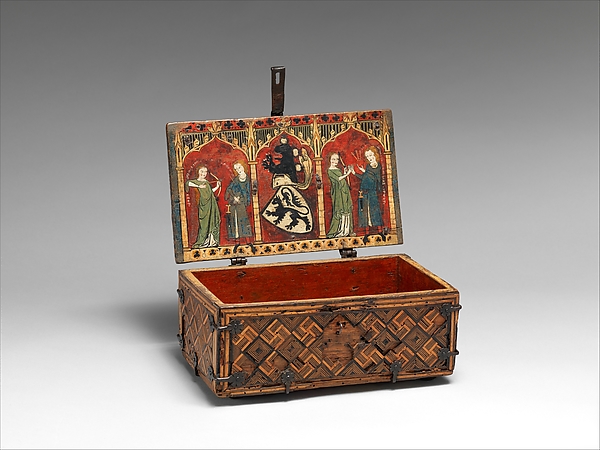Modern chemical azo-dyes were developed in the 19th century. They were first synthesized from coal tar. Now they're made from petroleum byproducts. Azo dyes are really cool. They come in every color there is and they are really pretty safe to work with. FD&C colorants are azo dyes. But there weren't any man made dyes in the middle ages. They had to be isolated from natural sources and manipulated with mordants to set color. Many natural dyes fade over time although indigo and woad are pretty darn stable. Indigo is one of the few natural dyes still in use today for blue jeans. The mordants are the main reason using man made dyes is generally safer. They can be pretty dangerous. Metals such as iron, aluminum from alum, tin, and copper can be used. Dyes can also be manipulated with acids and bases. I used citric acid and ammonia because they are readily available. Citric is probably not the most period-accurate acid for Europe, but it would have been easy to get in the tropics. Ammonia was produced by allowing urine to go stale. It was a stinky job. Queen Elizabeth I hated the smell of dying operations and dyers so much that it was unlawful for a woad dyer to work or live within 5 miles of one of her residences. She had a lot of residences by the way. Woad (dark blue/European indigo color) is particularly stinky because the plants have to be fermented before they're useful as a dye.
I went with alum and cream of tartar as pre mordants and ammonia and citric acid as post mordants because they are relatively easy to find in food grade form and relatively safe. Note that ammonia is not food grade, but it is a relatively safe cleaner. Don't eat it. Alum is sold as a firming agent for pickles. It's really not a food. It is toxic in it's pure form. Don't eat that either. However, for a small experiment, I can return my equipment to food use after careful washing. I decided to use turmeric as a dye. It makes a really pretty golden yellow. It's the yellow in Buddhist monk's robes. Although it evidently isn't super light fast.
I used cotton yarn, cotton muslin, cotton/poly shirting, linen, superwash merino and mystery wool for this project. I don't have any silk scraps in my stash at the moment. Half the samples were pretreated with alum/tartar/salt mordant for an hour. The other half was treated with just salt. While that was soaking I prepared my dye. I had some old turmeric. I boiled it in water with a little citric acid added at the end of the hour. I rinsed the mordant out of the samples. I popped them into two separate dye baths, one for each treatment, and let them sit overnight. In the morning I rinsed the dye out and separated it based on treatment. The cotton yarn turned brown during the rinse. This makes me wonder if it was dyed "natural." Half of each treatment group got an ammonia post mordant. The ammonia turns everything a dark rusty brown. I accidentally dripped some ammonia on things that shouldn't have gotten it. :-( But then I thought, if alkaline pH makes it go dark, can I push the color the other way with an acid? Turns out--yes you can! I made some citric acid solution and got the dark spots out. The acids drives turmeric to a bright yellow color. It remains to be see how stable that is though. Curcumin, the pigment in turmeric, goes yellow below pH 7.5 and rusty orange above pH 8.6, similar to phenol red indicator.
 |
| Soaking in the dye, along with ingredients. |
 |
| After dying, before post mordant. |
 |
| After rinsing post mordant out. |
This was a fun project, and I am anxious to try other dyes. Color is so much fun! I am working on a tunic dress in the cotton/poly shirting. I think it's going to get a turmeric/alum/acid dying. I'll post a picture of it when I am done.
References:
http://rurification.blogspot.com/2013/02/natural-dye-experiments-part-2.html
Rurification is a super cool blog by the way! Robin is a local artist near my hometown. She was also my spinning teacher. She does cool food stuff too. Hopefully I get to take more classes from her!







